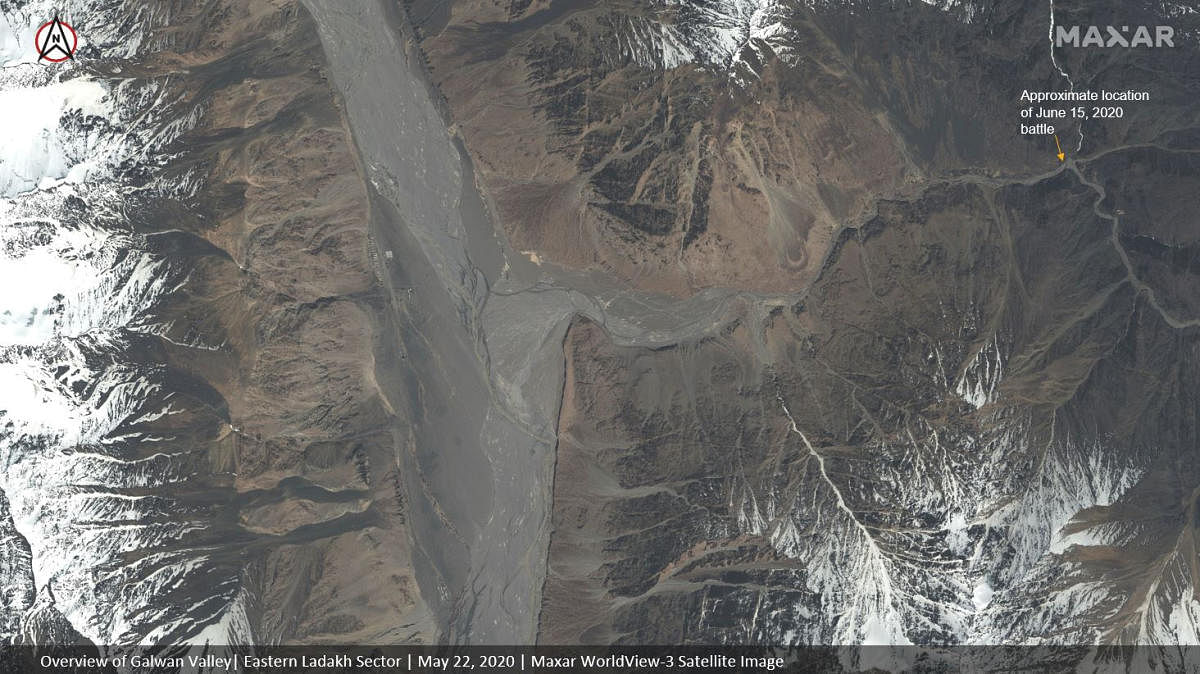
Worries continue on the China front notwithstanding the mutually agreed disengagement plans with the People’s Liberation Army strengthening its presence in the Depsang areas, north of Galwan Valley, while continuing to maintain a highly fortified presence in the Galwan Valley and Finger areas on the banks of the Pangong lake in eastern Ladakh.
Satellite images show heavy military presence in the Galwan valley with both India and China injecting far more men and military hardware in the area. But Chinese troops are far more forward with their strength rising continuously.
A small Chinese observational post in Galwan valley that was destroyed by the Indian troops on June 15 leading to the clash, has resurfaced.
Troubles may also be brewing in the Depsang areas, closer to the Daulat Beg Oldie airstrip where the PLA significantly enhanced its troop strength. The areas used to be patrolled by Indian troops (PP-10, PP-11, PP-12 and PP-13) have now been blocked by the Chinese soldiers who created dirt tracks to enter deep inside the Indian territory.
The PLA had increased its troops by nearly 30% in the Depsang area that witnessed a three weeks long face-off in 2013, said a defence analyst, adding that the PLA troops had advanced deeper into Jeevan Nullah (PP-13) and Raki Nullah (PP-12) areas.
Neither the Army nor the Ministry of External Affairs have responded to these reports and satellite images so far.
News agency ANI quoting government sources reported that Chinese troops were trying to create troubles for Indian soldiers in PP-10 to PP-13 areas opposite DBO. A Chinese dominance in that area will compromise the strategic advantage of the Darbuk-Shyok-DBO road link that is key to maintain the supply line in far flung areas of north and east Ladakh.
The same area saw a three weeks long face-off in April-May 2013, when PLA troops came 19 km inside Indian territory to pitch a camp at Raki Nullah. The confrontation, however, ended amicably when the Chinese troops were pulled back.
After the brutal May 15 clash that killed 20 Indian soldiers, senior military leaders from India and China had a nearly 11 hours long marathon meeting in which they framed a mutually agreed plan to reduce the troops from all the friction areas in eastern Ladakh. Both sides agreed to take the “modalities of disengagement” forward.
But the new buildup happened within days of announcing the disengagement plans, raising doubts on the PLA’s real motive. A similar road-map to reduce the tension was finalised in a previous meeting on June 6 but the mutually agreed plan was thrown out of the window by the PLA troops who attacked the Indian soldiers implementing the plan.
"The build up is not a surprise as the Chinese came up with a premeditated plan with the aim of disturbing the status quo. There is now a clear trust deficit,” former Army Chief Gen Deepak Kapoor commented in a TV interview. Army sources agreed that an air of distrust now hangs on the disengagement plans.
The Finger areas on the northern banks of the Pangong Tso (lake) also remains a contentious zone with the Chinese side aggressively trying to bring new areas under its control. Earlier Indian troops used to go for patrolling up to Finger 8, but now stopped at Finger 4, which is eight km ahead. Satellite images too reveal construction of enormous Chinese infrastructure on the northern banks.
